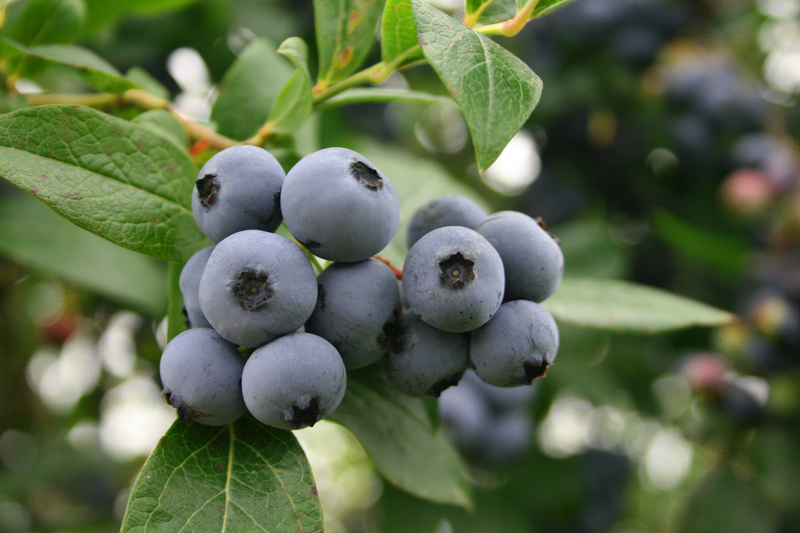Here are six of our favorite plants for edible landscaping. They taste as good as they look!
Blueberries
Blueberries have appeal in all four seasons. The white blossoms of spring, the summer fruits, the red fall foliage and the bark texture visible in winter all make this plant a good fit for your landscape, and a healthy blueberry bush will bear for up to 50 years!You’ll need cross-pollination, so select at least two different varieties that bloom at the same time. And as with all crops, know the pH of the site you’ve chosen before planting. Blueberries prefer an acidic pH of 4.5 to 5.3, so if it’s higher than this, you can adjust by adding a small amount of sulfur.
Serviceberry
When I was a child, my grandmother always sang the praises of the “sarvis” tree, also know regionally as shadbush or Juneberry. The fruits look similar to a blueberry, although the two aren’t related. The serviceberry is a tree, not a shrub, and can reach heights in the landscape of up to 25 feet tall (and even taller in a natural environment).Bake them into pies, puddings or muffins. Dehydrate them like raisins.
I had to attend a conference this past summer, and I discovered that serviceberry had been used quite effectively in the inn’s formal, manicured landscape, and it was bearing prolifically among the more conventional ornamental choices.
Kousa dogwood
This Asian dogwood looks similar to the flowering dogwood native to the eastern U.S., but it’s more disease-resistant, it performs better in full sun, and it has edible fruits the size of a small plum. These can be eaten raw or used to make jams or jellies.Cornelian cherry
Not actually a cherry at all, but another species of dogwood, the fruits from this tree are tart and versatile. In the U.S., they’re typically used to make jam, but in parts of Europe or the Middle East where this species is native, the fruits might be used in the distillation of vodka or served as a salted summertime snack.Passionflower
Nine species of passionflower are native to the U.S., and other species are commercially produced in tropical climates for juice, which can be found on the shelves of most larger supermarkets. Juice can be produced from most of our native species as well, but the maypop or purple passionflower (Passiflora incarnata) is considered the best.New research suggests that passionflower may treat insomnia and anxiety as well as prescription drugs, but without the side effects.
Where you may typically have ornamental vines like clematis running up a mailbox or trellis, consider passionflower instead.
Currants
Currants are related to gooseberries but have no thorns. Currants are one of the few fruits that perform well in partial shade, so if you have a corner of your yard that doesn’t get solid sunlight from morning until evening, consider these.From early June through August, this bright, tangy fruit is at its flavorful peak. Enjoy it in recipes that are sweetly irresistible.
Currants come in a range of colors, from black to red to pink to white, but be mindful that some types could be illegal in your state. This is a carryover from the early 20th Century, when it was discovered that black currants were an alternate host for white pine blister rust, a disease which negatively impacted the timber industry.
Have you ever grown or eaten any of these plants? Would you consider planting an edible landscape? Which one of these plants is your favorite? Share your thoughts in the comment section below!
Article Source: The Prepper Journal

Plum, cherry, peach, etc., are beautiful in the spring plus you get the benefits of the fruit. Love a mulberry tree, blueberry and cherry bushes. You are so right, plus rosemary and sage makes a nice little bush.
I just ordered Maypop and service berries to add to my food forest.